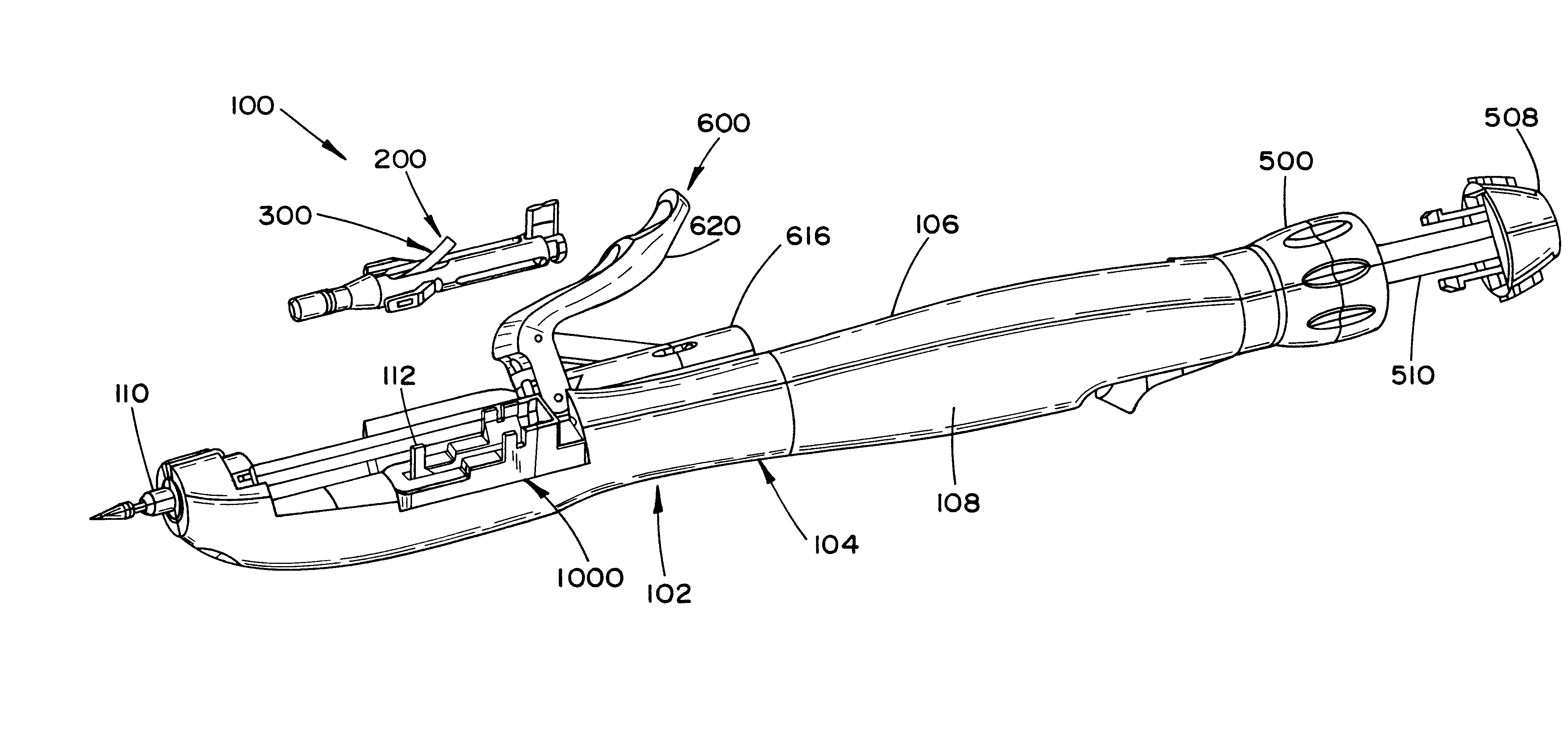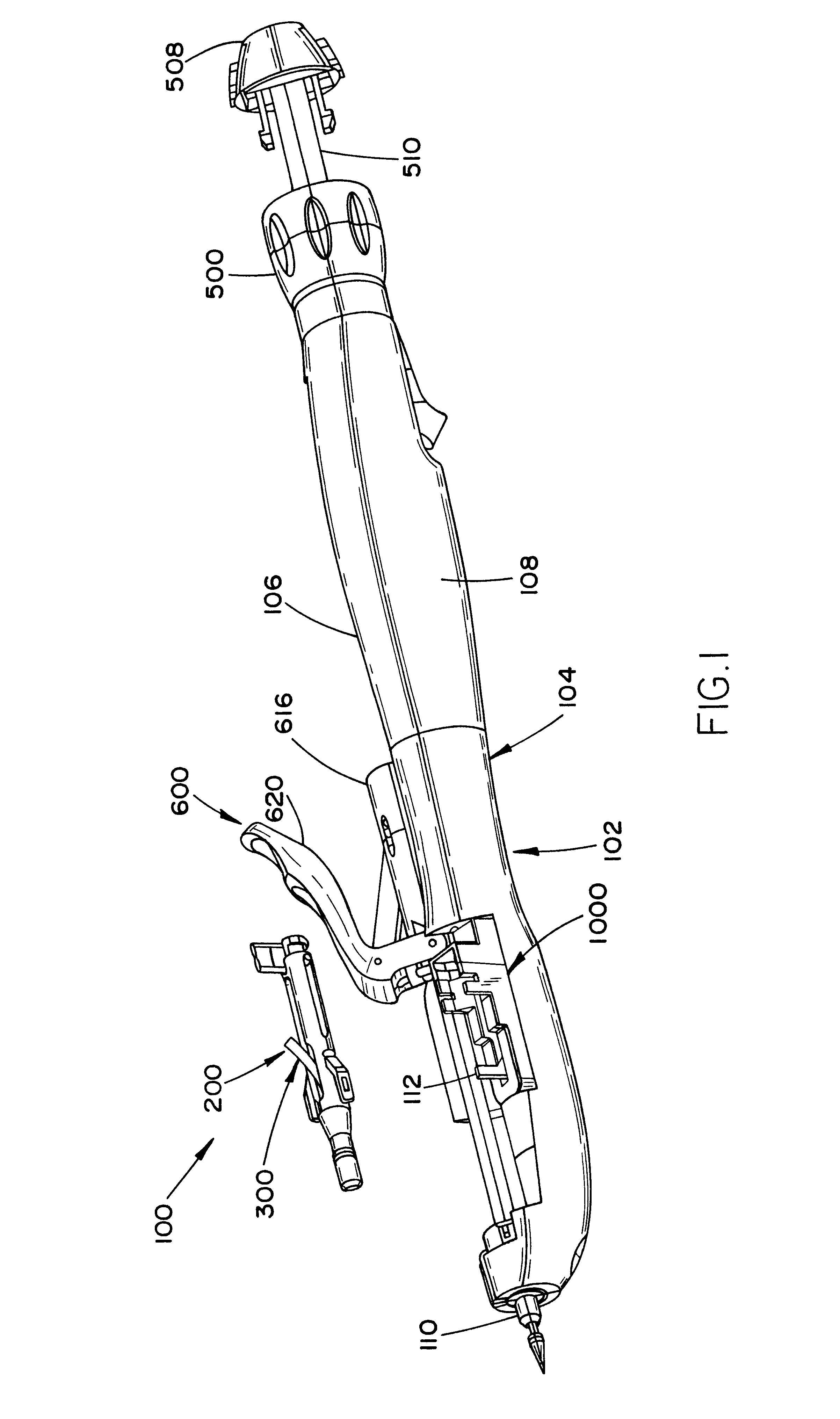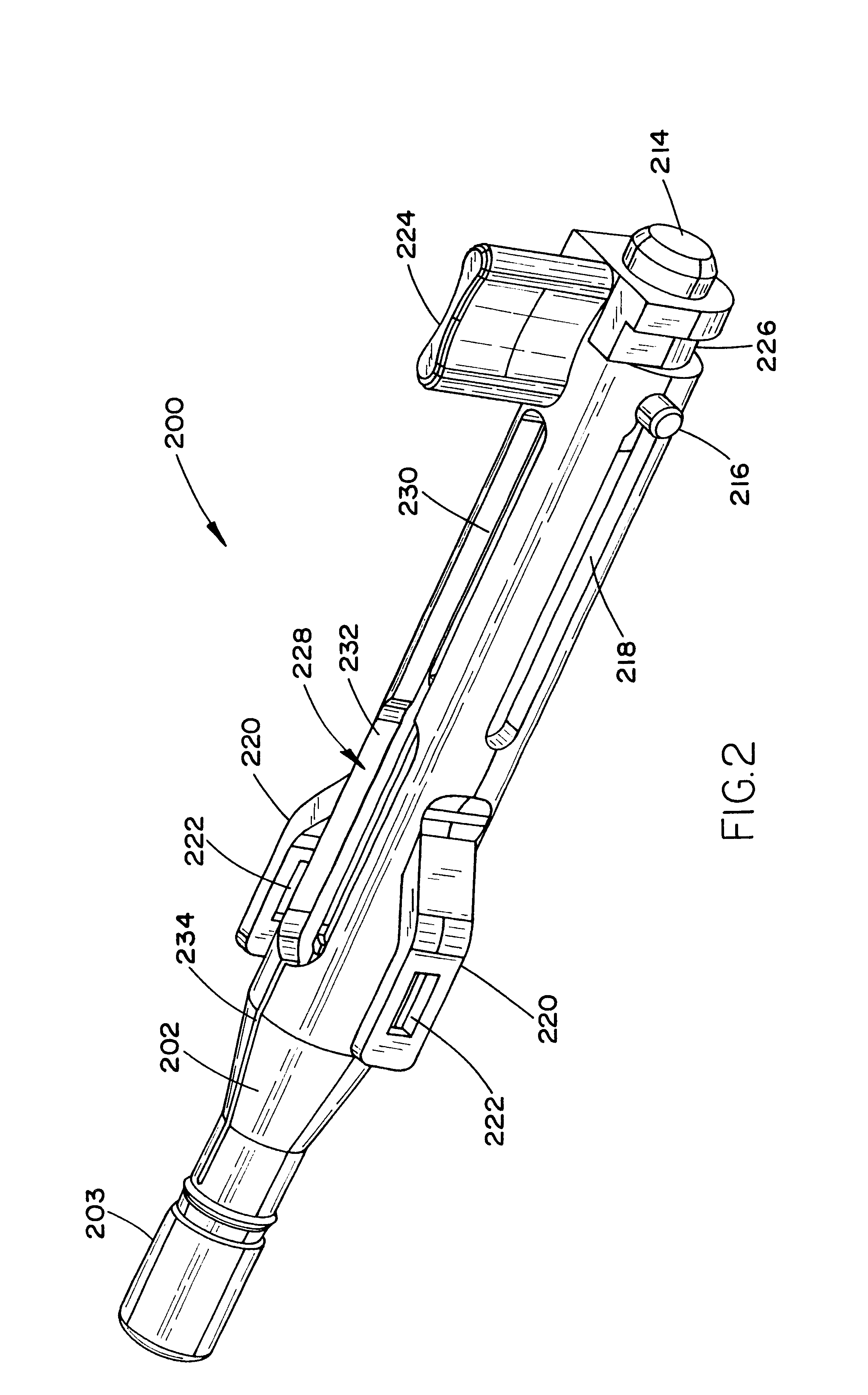Surgical device for creating an anastomosis between first and second hollow organs
a surgical device and hollow organ technology, applied in the field of surgical devices, can solve the problems of leakage of blood from the aorta, time-consuming hand suturing the graft vessel, and great surgical skill
- Summary
- Abstract
- Description
- Claims
- Application Information
AI Technical Summary
Benefits of technology
Problems solved by technology
Method used
Image
Examples
Embodiment Construction
As discussed above, the present invention has particular utility in a coronary artery bypass graft procedure (CABG), however, the use of the instruments of the present invention is now described with regard to the CABG procedure by way of example only and not to limit the scope or spirit of the present invention. A patient is prepared for cardiac surgery in a conventional manner using conventional techniques and procedures. The patient is then anesthetized and ventilated using conventional techniques. A conventional CABG procedure is performed by harvesting the greater saphenous vein from one or both of the patient's legs. The surgeon prepares an opening to the heart by dividing the patient's sternum (conventional median sternotomy) and spreading the rib cage apart using a surgical retractor. The surgeon next begins dissecting the internal mammary artery (IMA) from the chest wall of the patient, so that the distal end of the vessel may be anastomosed to the diseased lower anterior d...
PUM
 Login to View More
Login to View More Abstract
Description
Claims
Application Information
 Login to View More
Login to View More - R&D
- Intellectual Property
- Life Sciences
- Materials
- Tech Scout
- Unparalleled Data Quality
- Higher Quality Content
- 60% Fewer Hallucinations
Browse by: Latest US Patents, China's latest patents, Technical Efficacy Thesaurus, Application Domain, Technology Topic, Popular Technical Reports.
© 2025 PatSnap. All rights reserved.Legal|Privacy policy|Modern Slavery Act Transparency Statement|Sitemap|About US| Contact US: help@patsnap.com



